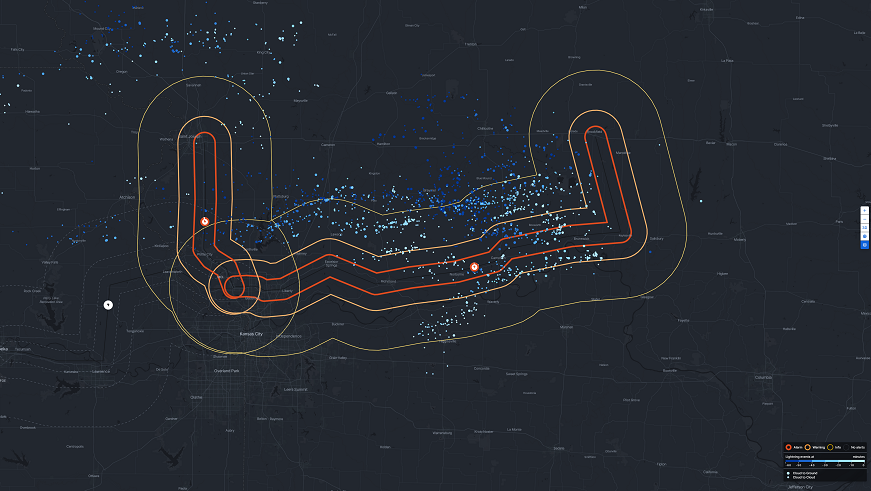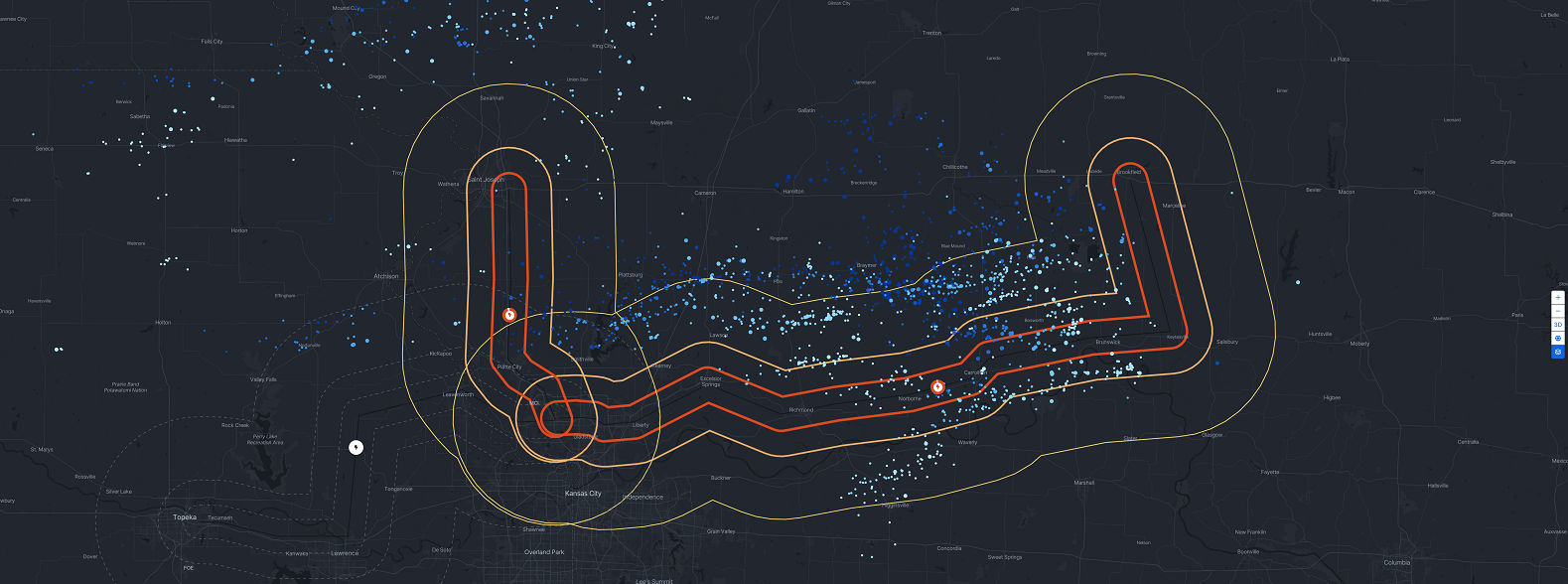Powered by Xweather's precise weather data, Safegrid's Intelligent Grid System® provides operators with a full view of ongoing and impending faults in power grids.
Just like the air we breathe, electricity is probably something you don't even think about until it's suddenly out. In most cases, electricity is distributed by the power grid, a series of interconnected networks that carry power from producers to consumers. Weather events interfering with the grid cause as many as 80% of reported power outages globally. This includes approximately 83% of major power outages in the US between 2000 and 2021.
Weather impacts the power grid in various ways. Extreme weather is the primary cause of blackouts in the U.S., with storms and lightning damaging power lines, extreme temperatures triggering grid malfunctions, snow weighing down trees leading to their collapse on power lines, and extreme temperatures triggering grid malfunctions.
Utilities, DSOs, and TSOs have no choice but to operate the grid 'in the dark,' resulting in annual costs amounting to billions
Utilities, DSOs, and TSOs have no choice but to operate the grid 'in the dark,' resulting in annual costs amounting to billions
There are multiple ways to monitor the grid and different aspects of its operation. Grid analytics software, remote sensing technologies, and automated control systems are some commonly deployed tools for grid monitoring and fault analytics. Yet, existing solutions provide poor visibility of fault types and locations. Utilities, DSOs, and TSOs have no choice but to operate the grid 'in the dark,' resulting in annual costs amounting to billions. Grid sensors neither detect fire-causing events fast enough nor provide sufficiently accurate location data to effectively prevent fires.
This is where Safegrid steps in; powered by Xweather's precise weather data, Safegrid's Intelligent Grid System® provides operators with a full view of ongoing and impending faults in power grids. The solution is synchronized with weather events that impact the grid state, such as thunderstorms and wind gusts near power lines.
Operators can now minimize costly downtime, improve operating margins, and support overall grid reliability.
Operators can now minimize costly downtime, improve operating margins, and support overall grid reliability.
The highly precise AI-driven grid fault location and prediction capabilities of this solution empower operators to make better-informed decisions to prepare for weather events likely to induce grid faults. It also helps characterize the root cause of asset failures. As a result, operators can minimize costly downtime, improve operating margins, and support overall grid reliability.
According to Xweather’s Solutions Director John Liljelund, Xweather offers the easiest-to-integrate weather platform, powered by the most accurate and relevant measurement data trusted by national meteorological organizations, weather-dependent businesses, and even NASA. Combined with Safegrid’s novel technology, it gives Transmission System Operators (TSOs) and Distribution System Operators (DSOs) exceptional visibility over the grid, paired with robust severe weather forecasts and alerts.
How does it work?
In Safegrid’s solution, weather data and forecasts work in tandem with Greyfox® and Greyhawk® – sensors that form a deep learning analytic system for fault prediction and predictive grid maintenance. The system acquires vast amounts of high-frequency sensor data and uses unsupervised learning to classify/cluster datasets, allowing it to locate faults and anomalies with unprecedented accuracy. The system also detects high-impedance events unnoticed by other technologies. By identifying and locating precursor events, the system adapts to the environment and produces suggestions for corrective action for timely maintenance.

Configure automated alerts for lightning near transmission lines with Xweather
The system detects high-impedance events unnoticed by other technologies.
The system detects high-impedance events unnoticed by other technologies.
Jussi Hakunti, Chief Digital Officer of Safegrid, emphasizes the collaboration enables full grid situational awareness in one view, taking the protection and optimization of grid maintenance operations to the next level. "Concerning predictive risk avoidance, we will be able to identify sections of the power grid at particular risk of approaching thunderstorms. The service also allows us to assess areas of the grid where weather events are likely to cause vegetation to come into contact with power lines - a leading cause of wildfires. With this new service, we provide the customer with more detailed information about where and when they should go to inspect the situation on-site, saving time on unnecessary trips," says Hakunti.
Stay tuned for more solutions to safeguard power infrastructure from severe weather impacts!

